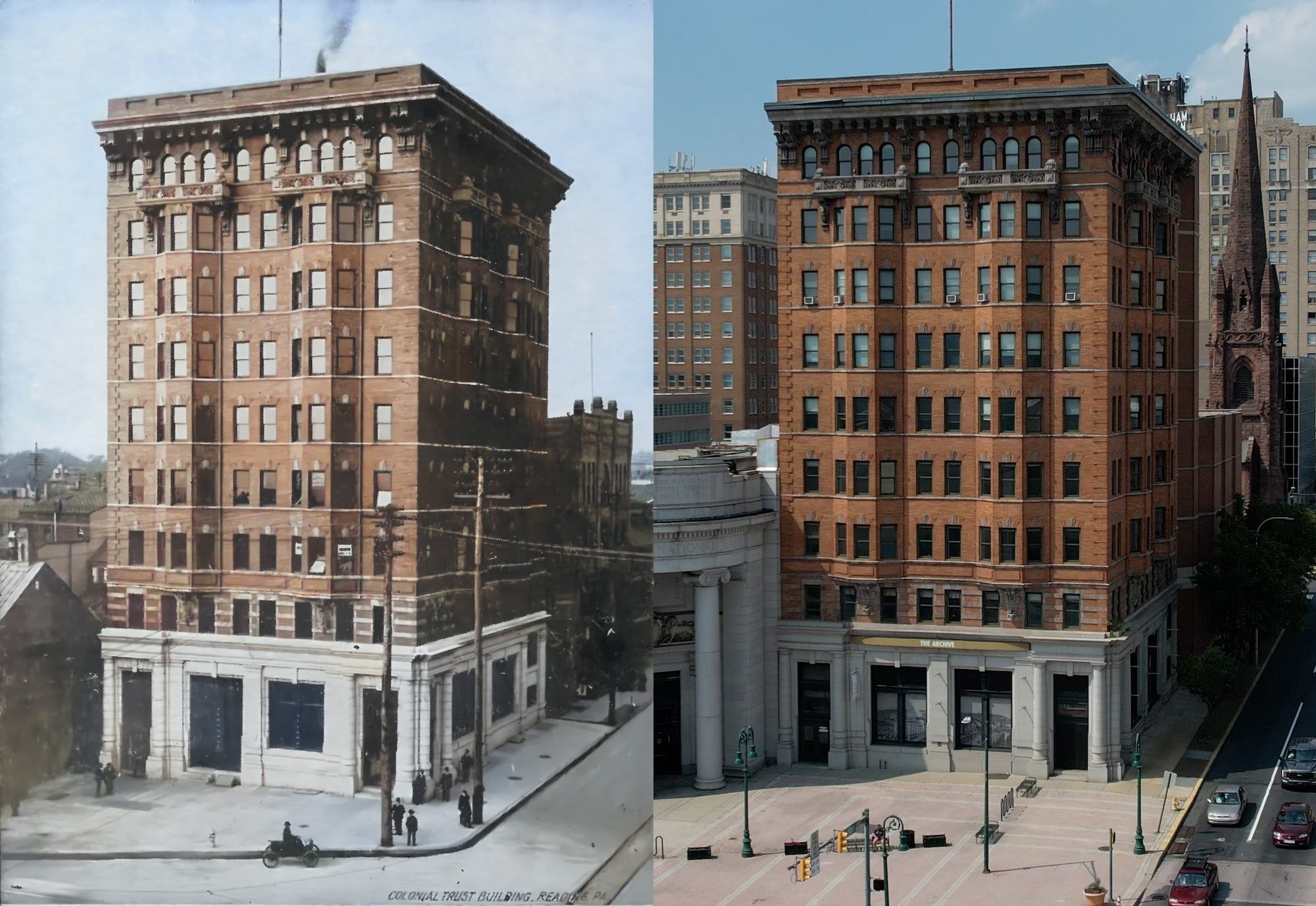The Colonial Trust Company was established in May 1900. It was formed by a handful of local capitalists including the likes of William McIlvain, John Barbey, Frank Lauer, E. W. Alexander, B. F. Owen, S.B. Keppel, Walter Rigg, and Howard Saylor. They opened for business officially in August 1900 and Louis F. Kraemer was the company’s first president. The company initially conducted business out of the “Hoff” building which was located at 15 N. 5th Street; nearly across the street from the northwest corner of 5th and Penn where they would build an impressive new structure. Only a year later the call went out to contractors for bids.
In January of 1903 the Reading Times reported that the building was testing its electrically powered elevator, which was a relatively new technology. The elevator was dropped from the eighth floor all the way to the basement, a distance of 105 feet in less than two seconds. On the elevator were a glass of water filled to the brim, a box of nails with seven eggs on top and five more eggs on the floor of the elevator car. The elevator car weighed 400 pounds and landed on a cushion of cement and iron plates. According to the article, neither the water nor eggs were disturbed or broken after the rapid descent. I find that hard to believe.
The building took over a year to complete and was finally ready for occupation in April 1903. The vast majority of the building was leasable office space, as the trust company conducted its banking business on the street level. The building boasted 9 stories and was easily the tallest building in the city of Reading at that time. It would hold that title for a quarter century until the Metropolitan Edison Company building was completed in 1927. The April 30th, 1903 Reading Times reported, “The bank stands as a monument to the founders and to the city“. It went on,
As one enters the doors from either Fifth or Penn street entrance, he finds on all sides, extending about five feet high, highly polished marble slabs. Along the walls at convenient places are brackets holding plate glass, which are used as writing desks by patrons. The walls and ceilings are finished in yellow and white. Electric bulbs are suspended from the ceiling. On the west side of the bank and the offices and depositories. The furniture and fixtures for these appointments are of solid mahogany.
April 30th, 1903 Reading Times
In the rear are the vaults, two in number, one large, the other small. The smaller one is to be utilized for books and papers, while the larger will contain the cash and safe deposit boxes, it being subdivided into two apartments by a heavy grated iron door. Both vaults have time locks, so that when locked by the treasurer in the afternoon they cannot be opened until the next morning at 9 o’clock.
In the rear are also the ladies apartments, all finished in rich mahogany. Climbing a stairway of iron and marble to the balcony and directors rooms, one sees the same artistic arrangement of decoration. While in use the directors room is closed by a velvet curtain.
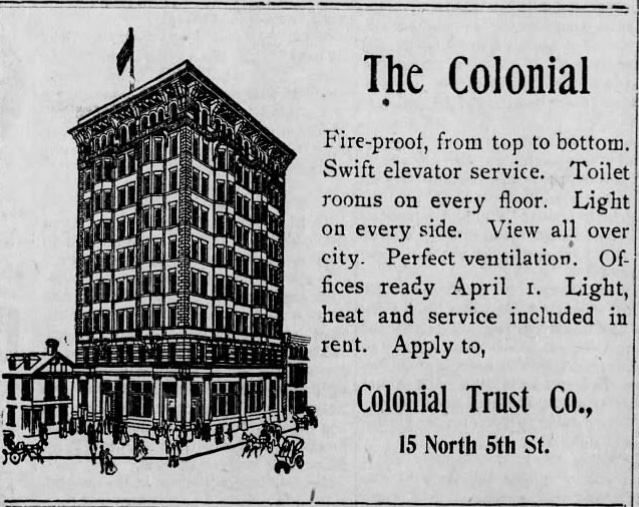
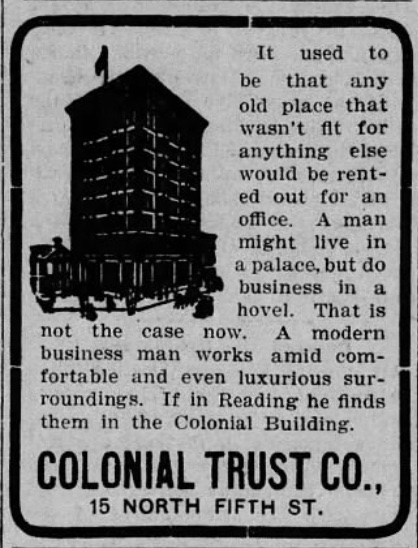
The April 29th, 1903 Reading Eagle article about the new building described it in even more detail, “the banking room is 34 by 70 feet in dimensions while the ceiling is 22 feet above the floor. The banking room is finished in mahogany, beautifully carved, while the fixtures are trimmed with rich copper grill work and heavy frosted plate glass. The base of the counters is of marble as is also the high wainscoting along the sides of the room. The ceiling is supported by two columns of scagliola work. It is finished in white, laid out in panels in the centre of which are clusters of electric lights. The floor is laid with a beautiful mosaic put down by the Mosaic Tile Company of Philadelphia.” All in all there were 119 rooms in the building, all electrically lit and ventilated. Philadelphia architects Seymour and Paul Davis designed the structure and local contractor L. H. Focht built it.
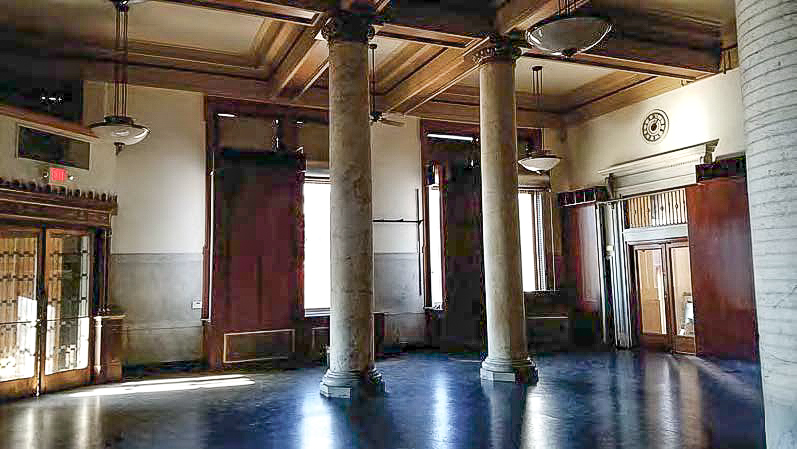
The Colonial Trust Company enjoyed many prosperous decades in business. It eventually boasted large electrical lettering along the top of the building spelling out “COLONIAL”, adding to its prominence as a main feature of Penn Street. On New Years Eve 1929 the Colonial Trust Company announced that it would be beginning the new decade by merging with Northeastern Trust Company, located at 9th & Spring Streets, and would now be called the Colonial-Northeastern Trust Company.
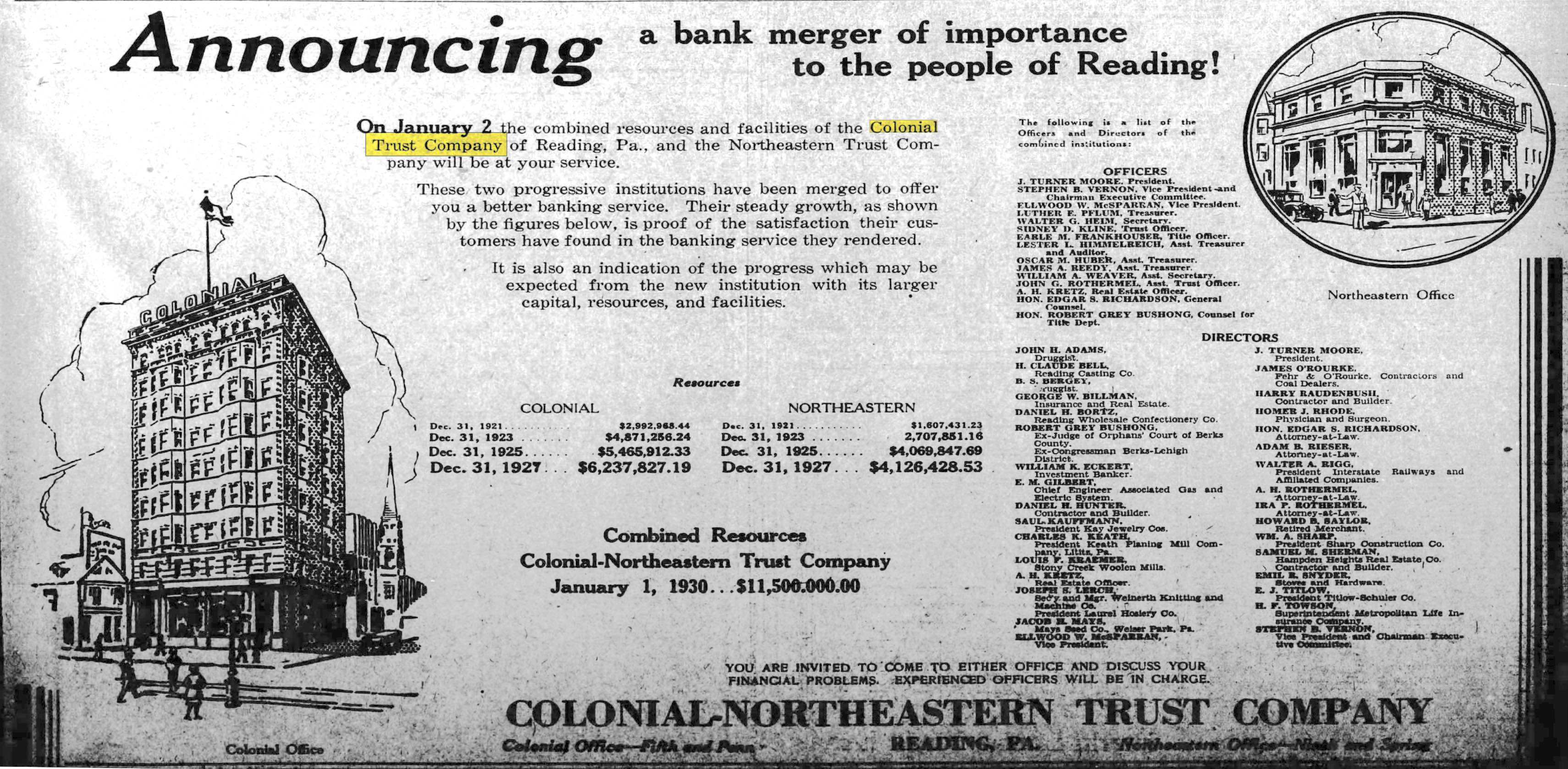
By 1940 the company merged again with the Berks County Trust Company. It seems like all of the once independent banking institutions began consolidating. Berks County Trust Company went on to become American Bank, and then Meridian. The history of which is outlined in the linked article in the previous sentence. A large addition was constructed onto the back of the Colonial building in 1982. Meridian owned the structure up until 1995 when it sold to Pomeroy’s Associates LP. It was sold again 2004 and was occupied for some time by Citizens Bank. In 2013 the city of Reading purchased it and four other buildings that take up half of the north side 400-block. In 2019 they had an environmental site assessment (click to download the report) done on all of those structures including the Colonial Trust building. The reports indicated that at the time of the report the interior was in good shape, and had no water damage. The same can not be said about the 431-437 Penn Street properties.
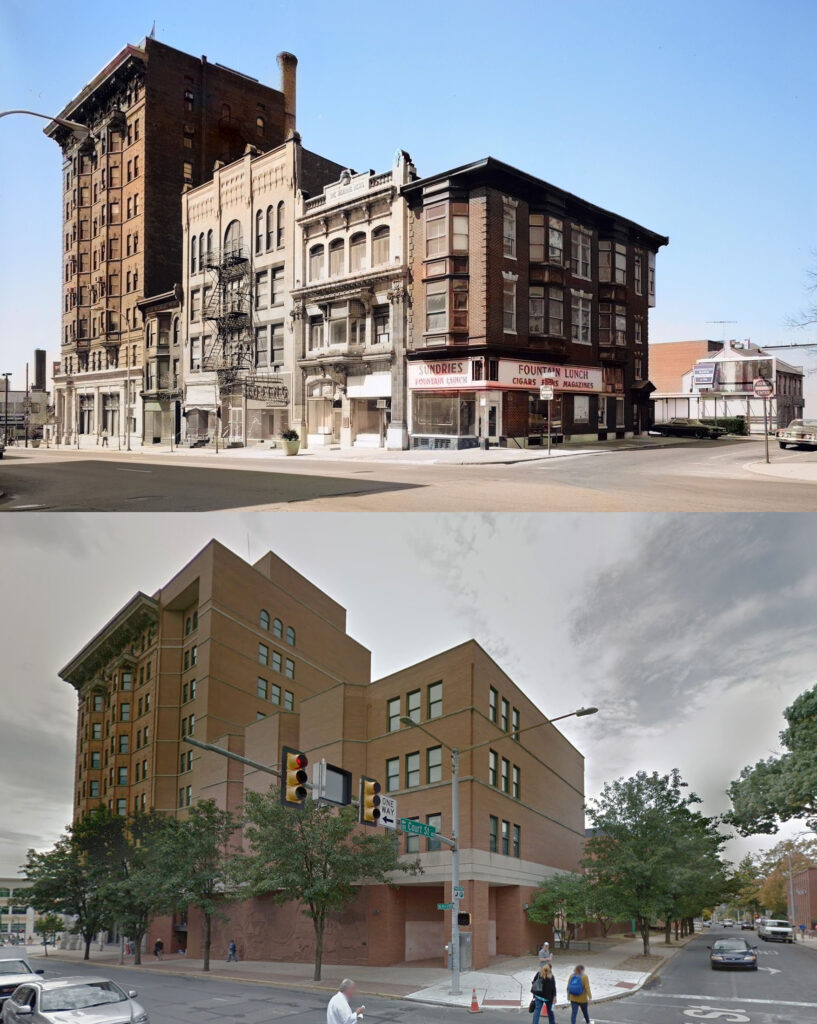
One interesting thing of note is that the facade of the “Reading News” building, visible one in from Court above, was saved, moved around the corner and placed onto the 431 Penn Street building.
On January 22nd, 2024 the Reading Eagle reported that city council had approved the sale of the five 431-443 Penn Street buildings to a Philadelphia development company called Philly Office Retail. Nothing has been reported since then and as of April 2024 the properties are still listed as being owned by the City on parcel viewer.
